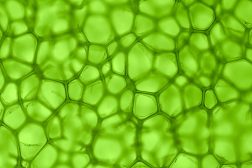Definition
noun
A short, narrow passageway through the temporal bone of the skull where the vestibular nerve and cochlear nerve pass through to reach the brainstem from the inner ear.
Supplement
In humans, the internal acoustic meatus is about 1-2 cm in length. Aside from the vestibular nerve (responsible for balance) and cochlear nerve (responsible for hearing), the facial nerve also runs through this canal.
The canal opens to the inside of the cranial cavity, near the center of the posterior surface of the temporal bone, and the opening is called internal acoustic opening. At the other end of the canal are the openings for the vestibulocochlear nerve and facial nerve.
Unlike the external acoustic meatus that transmits sound waves, the internal acoustic meatus carries the facial and vestibulocochlear nerves that transmit information to the brain.
Synonyms:
- meatus acusticus internus
- internal auditory canal
- internal auditory meatus
Compare:







